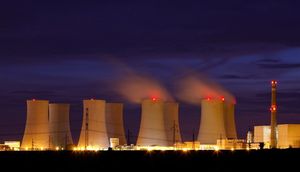LOS ANGELES, CA / ACCESS Newswire / November 10, 2025 / The graveyard of failed technology initiatives is filled with companies that moved too early or too late. In today's environment of rapid technological change-from artificial intelligence to quantum computing-the question isn't just which technologies to adopt, but when Kotaro Shimogori, who successfully applied machine learning years before it became mainstream, offers a valuable perspective on timing technology adoption for maximum business impact.
"I was a forerunner of using machine learning," Shimogori notes, reflecting on his early work automating complex classification systems. This experience-applying emerging technology to solve real business problems before the market fully understands its potential-provides lessons for organizations evaluating today's emerging technologies.
The Pioneers' Dilemma
Early technology adoption presents a fundamental dilemma: move too soon and you face immature technology, limited support, and high costs; wait too long and competitors gain insurmountable advantages. Shimogori's experience suggests that successful timing depends less on the technology's maturity than on the alignment between technological capability and specific business needs.
His machine learning work for international trade succeeded not because machine learning had reached full maturity, but because it addressed a specific, well-defined problem-connecting natural language product descriptions to complex technical classifications. The technology was ready enough to solve this particular challenge, even if broader applications remained years away.
"The question isn't whether a technology is fully mature, but whether it's mature enough to solve your specific problem better than existing alternatives," Shimogori explains. This pragmatic approach contrasts with both aggressive early adoption for its own sake and conservative waiting for complete market validation.
Reading Market Signals
Successful technology timing requires interpreting multiple market signals beyond simple technology readiness. Shimogori's experience developing cross-border commerce systems revealed several indicators that suggest optimal adoption timing:
Problem-Solution Fit: The technology addresses a specific, painful problem that existing solutions handle poorly. His harmonized tariff code system succeeded because manual classification was error-prone and couldn't scale with growing trade volumes.
Economic Viability: The technology's benefits outweigh its costs, even accounting for early-adoption premiums. This calculation must include not just direct costs but opportunity costs of maintaining status quo approaches.
Ecosystem Development: Supporting infrastructure-whether tools, talent, or complementary technologies-has reached minimum viable levels. Shimogori's early machine learning work benefited from emerging cloud computing infrastructure that made complex processing economically feasible.
Competitive Dynamics: The competitive landscape creates pressure for innovation without everyone moving simultaneously. His patent-protected innovations often emerged in windows where forward-thinking companies could establish lasting advantages.
The Infrastructure Test
One of Shimogori's key insights involves evaluating whether organizational infrastructure can support new technology adoption. His infrastructure-first philosophy suggests that successful technology adoption requires more than just implementing new tools-it demands organizational readiness across multiple dimensions.
"Innovation that ignores infrastructure isn't innovation-it's a liability," he observes. This principle applies particularly to timing decisions. Organizations must assess whether their technical architecture, operational processes, and human capabilities can support new technology before committing to adoption.
This infrastructure readiness extends beyond technical considerations to include organizational culture, change management capabilities, and risk tolerance. Early adoption requires organizations to be comfortable with uncertainty and capable of iterating through challenges-qualities that must exist before technology implementation begins.
Learning from Failed Timing
Shimogori's career has provided visibility into both successful and failed technology timing decisions across the industry. Failed early adoptions often share common characteristics, including unclear problem definition, inadequate infrastructure preparation, and insufficient commitment to addressing early challenges.
Conversely, companies that wait too long often mistake risk avoidance for prudent planning. His work on resilient system design demonstrates that calculated risks, properly managed, create more value than excessive caution. The key lies in distinguishing between necessary experimentation and reckless speculation.
"The biggest risk is often not taking any risk," Shimogori notes, echoing his broader philosophy on execution over innovation. This doesn't advocate for blind risk-taking but rather for thoughtful evaluation of when emerging technologies warrant calculated bets.
Practical Framework for Timing Decisions
Based on his experience successfully timing technology adoption, Shimogori's approach suggests a practical framework for evaluation:
Define Specific Problems: Before evaluating any technology, clearly articulate the business problem it would solve. Vague aspirations like "digital transformation" provide poor guidance for timing decisions.
Assess Relative Advantage: Compare the emerging technology not to perfection but to current alternatives. If it provides significant improvement even in early form, earlier adoption may be warranted.
Start Small: His approach to design thinking in business emphasizes prototyping and iteration. Small pilot projects can validate timing assumptions without massive commitments.
Build Learning Capacity: Early adoption succeeds when organizations can learn and adapt quickly. Building this capacity should precede major technology investments.
Monitor Evolution: Technology capabilities and costs change rapidly. Regular reassessment ensures timing decisions reflect current rather than historical realities.
The Competitive Advantage of Good Timing
Shimogori's early machine learning adoption created lasting competitive advantages that extended beyond the immediate application. By developing expertise before machine learning became mainstream, his organizations built knowledge moats that competitors couldn't quickly replicate.
This first-mover advantage in capability development-distinct from first-mover advantage in market entry-provides sustainable benefits. As he notes in his analysis of AI in finance, organizations that developed machine learning expertise early could evaluate and implement subsequent applications more effectively than those starting from zero.
However, he cautions against pursuing first-mover status for its own sake. "Being first is only valuable if you can sustain the advantage," Shimogori observes. This sustainability depends on continuous learning and adaptation rather than single technology bets.
Looking Forward: Emerging Technology Decisions
Today's organizations face timing decisions about numerous emerging technologies: generative AI, quantum computing, blockchain applications, augmented reality, and others. Shimogori's experience suggests that successful adoption timing will come from applying systematic evaluation rather than following market hype.
His perspective on AI implementation demonstrates this systematic approach in action. Rather than rushing to implement AI because competitors are doing so, organizations should evaluate whether specific AI applications address real business problems better than existing solutions.
The same principle applies to other emerging technologies. Quantum computing may revolutionize certain calculations, but most organizations won't benefit from early adoption. Blockchain offers unique capabilities for specific trust and verification challenges but provides little value for many proposed applications. Successful timing requires matching technological capabilities to actual business needs.
Timing technology adoption is more art than science, but Shimogori's experience offers clear guidance. By aligning technology with specific problems, ensuring infrastructure readiness, and staying adaptable, organizations can identify the right moments to gain lasting advantage.
His success with early machine learning adoption underscores a simple truth: the goal isn't to adopt technology first, but to adopt it when capability and need truly align. This balanced approach-avoiding both haste and hesitation-provides a framework for making timing decisions that drive sustainable growth.
For leaders exploring emerging technologies, the lesson is clear: success comes not from being early or late, but from recognizing when a new tool can solve a problem better than existing options.
CONTACT:
Andrew Mitchell
media@cambridgeglobal.com
SOURCE: Cambridge Global
View the original press release on ACCESS Newswire





